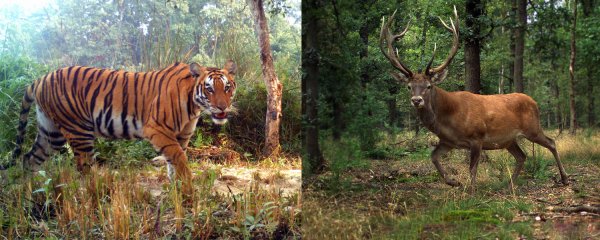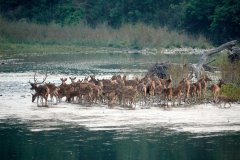One sixth of Amazonian tree diversity is dependent on river floodplains
Householder, John Ethan
,
Wittmann, Florian
,
Schöngart, Jochen
,
Piedade, Maria Teresa Fernandez
,
Junk, Wolfgang J.
,
Latrubesse, Edgardo Manuel
,
Quaresma, Adriano Costa
,
Demarchi, Layon O.
,
de S. Lobo, Guilherme
,
de Aguiar, Daniel P.P.
,
Assis, Rafael L.
,
Lopes, Aline
,
Parolin, Pia
,
Leão do Amaral, Iêda
,
de Souza Coelho, Luiz
,
de Almeida Matos, Francisca Dionízia
,
de Andrade Lima Filho, Diógenes
,
Salomão, Rafael P.
,
Castilho, Carolina V.
,
Guevara-Andino, Juan Ernesto
,
de Jesus Veiga Carim, Marcelo
,
Phillips, Oliver L.
,
Cárdenas López, Dairon
,
Magnusson, William E.
,
Sabatier, Daniel
,
Revilla, Juan David Cardenas
,
Molino, Jean François
,
Irume, Mariana Victória
,
Martins, Maria Pires
,
da Silva Guimarães, José Renan
,
Ramos, José Ferreira
,
de Jesus Rodrigues, Domingos
,
Bánki, Olaf S.
,
Peres, Carlos A.
,
Pitman, Nigel C.A.
,
Hawes, Joseph E.
,
Almeida, Everton José
,
Barbosa, Luciane Ferreira
,
Cavalheiro, Larissa
,
dos Santos, Márcia Cléia Vilela
,
Luize, Bruno Garcia
,
de Leão Novo, Evlyn Márcia Moraes
,
Núñez Vargas, Percy
,
Silva, Thiago Sanna Freire
,
Venticinque, Eduardo Martins
,
Manzatto, Angelo Gilberto
,
Reis, Neidiane Farias Costa
,
Terborgh, John
,
Casula, Katia Regina
,
Costa, Flávia R.C.
,
Honorio Coronado, Euridice N.
,
Monteagudo Mendoza, Abel
,
Montero, Juan Carlos
,
Feldpausch, Ted R.
,
Aymard C, Gerardo A.
,
Baraloto, Chris
,
Castaño Arboleda, Nicolás
,
Engel, Julien
,
Petronelli, Pascal
,
Zartman, Charles Eugene
,
Killeen, Timothy J.
,
Rincón, Lorena Maniguaje
,
Marimon, Beatriz S.
,
Marimon-Junior, Ben Hur
,
Schietti, Juliana
,
Sousa, Thaiane R.
,
Vasquez, Rodolfo
,
Mostacedo, Bonifacio
,
Dantas do Amaral, Dário
,
Castellanos, Hernán
,
Brilhante de Medeiros, Marcelo
,
Simon, Marcelo Fragomeni
,
Andrade, Ana
,
Camargo, José Luís
,
Laurance, William F.
,
Laurance, Susan G.W.
,
de Sousa Farias, Emanuelle
,
Lopes, Maria Aparecida
,
Magalhães, José Leonardo Lima
,
Mendonça Nascimento, Henrique Eduardo
,
Lima de Queiroz, Helder
,
Brienen, Roel
,
Stevenson, Pablo R.
,
Araujo-Murakami, Alejandro
,
Baker, Tim R.
,
Cintra, Bruno Barçante Ladvocat
,
Feitosa, Yuri Oliveira
,
Mogollón, Hugo F.
,
Noronha, Janaína Costa
,
Barbosa, Flávia Rodrigues
,
de Sá Carpanedo, Rainiellen
,
Duivenvoorden, Joost F.
,
Silman, Miles R.
,
Ferreira, Leandro Valle
,
Levis, Carolina
,
Lozada, José Rafael
,
Comiskey, James A.
,
Draper, Freddie C.
,
de Toledo, José Julio
,
Damasco, Gabriel
,
Dávila, Nállarett
,
García-Villacorta, Roosevelt
,
Vicentini, Alberto
,
Cornejo Valverde, Fernando
,
Alonso, Alfonso
,
Arroyo, Luzmila
,
Dallmeier, Francisco
,
Gomes, Vitor H.F.
,
Jimenez, Eliana M.
,
Neill, David
,
Peñuela Mora, Maria Cristina
,
Carvalho, Fernanda Antunes
,
Coelho de Souza, Fernanda
,
Feeley, Kenneth J.
,
Gribel, Rogerio
,
Pansonato, Marcelo Petratti
,
Ríos Paredes, Marcos
,
Barlow, Jos
,
Berenguer, Erika
,
Dexter, Kyle G.
,
Ferreira, Joice
,
Fine, Paul V.A.
,
Guedes, Marcelino Carneiro
,
Huamantupa-Chuquimaco, Isau
,
Licona, Juan Carlos
,
Pennington, Toby
,
Villa Zegarra, Boris Eduardo
,
Vos, Vincent Antoine
,
Cerón, Carlos
,
Fonty, Émile
,
Henkel, Terry W.
,
Maas, Paul
,
Pos, Edwin
,
Silveira, Marcos
,
Stropp, Juliana
,
Thomas, Raquel
,
Daly, Doug
,
Milliken, William
,
Pardo Molina, Guido
,
Vieira, Ima Célia Guimarães
,
Albuquerque, Bianca Weiss
,
Campelo, Wegliane
,
Emilio, Thaise
,
Fuentes, Alfredo
,
Klitgaard, Bente
,
Marcelo Pena, José Luis
,
Souza, Priscila F.
,
Tello, J.S.
,
Vriesendorp, Corine
,
Chave, Jerome
,
Di Fiore, Anthony
,
Hilário, Renato Richard
,
de Oliveira Pereira, Luciana
,
Phillips, Juan Fernando
,
Rivas-Torres, Gonzalo
,
van Andel, Tinde R.
,
von Hildebrand, Patricio
,
Balee, William
,
Barbosa, Edelcilio Marques
,
de Matos Bonates, Luiz Carlos
,
Doza, Hilda Paulette Dávila
,
Gómez, Ricardo Zárate
,
Gonzales, Therany
,
Gonzales, George Pepe Gallardo
,
Hoffman, Bruce
,
Junqueira, André Braga
,
Malhi, Yadvinder
,
de Andrade Miranda, Ires Paula
,
Mozombite-Pinto, Linder Felipe
,
Prieto, Adriana
,
Rudas, Agustín
,
Ruschel, Ademir R.
,
Silva, Natalino
,
Vela, César I.A.
,
Zent, Stanford
,
Zent, Egleé L.
,
Cano, Angela
,
Carrero Márquez, Yrma Andreina
,
Correa, Diego F.
,
Costa, Janaina Barbosa Pedrosa
,
Flores, Bernardo Monteiro
,
Galbraith, David
,
Holmgren, Milena
,
Kalamandeen, Michelle
,
Nascimento, Marcelo Trindade
,
Oliveira, Alexandre A.
,
Ramirez-Angulo, Hirma
,
Rocha, Maira
,
Scudeller, Veridiana Vizoni
,
Sierra, Rodrigo
,
Tirado, Milton
,
Umaña, Maria Natalia
,
van der Heijden, Geertje
,
Vilanova Torre, Emilio
,
Ahuite Reategui, Manuel Augusto
,
Baider, Cláudia
,
Balslev, Henrik
,
Cárdenas, Sasha
,
Casas, Luisa Fernanda
,
Farfan-Rios, William
,
Ferreira, Cid
,
Linares-Palomino, Reynaldo
,
Mendoza, Casimiro
,
Mesones, Italo
,
Parada, Germaine Alexander
,
Torres-Lezama, Armando
,
Urrego Giraldo, Ligia Estela
,
Villarroel, Daniel
,
Zagt, Roderick
,
Alexiades, Miguel N.
,
de Oliveira, Edmar Almeida
,
Garcia-Cabrera, Karina
,
Hernandez, Lionel
,
Palacios Cuenca, Walter
,
Pansini, Susamar
,
Pauletto, Daniela
,
Ramirez Arevalo, Freddy
,
Sampaio, Adeilza Felipe
,
Valderrama Sandoval, Elvis H.
,
Valenzuela Gamarra, Luis
,
ter Steege, Hans
(2024)
Nature Ecology and Evolution (2024) - ISSN 2397-334X




